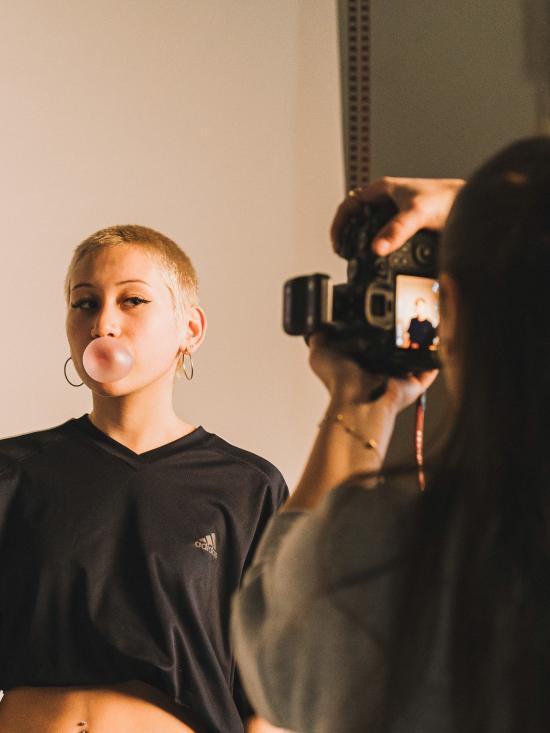The Bauhaus in photography
the Oliviero Toscani school
the Oliviero Toscani school
Oliviero Toscani, at home at the Accademia Italiana, where he been on several occasions involved in various projects with the students from the school – comments on the philosophy of the Bauhaus, in particular the Swiss school in Zurich where he was trained.He doesn’t hide his provocation when he affirms that today designers in general are “technical computers” that forget to be inspired by the powerful message of Gropius under the auspices of Bauhaus to unite art, the crafts and architecture.
This orientation, obviously is linked to the arts and crafts, but is also open to new techniques found in industrial design.
Such artistic ambitions influence also interpersonal relationships, in that there does not exit as net distinction between the artist and the artisan. The same Gropius, in the Bauhus movement, expressed: “the purpose of all figurative activities is construction: architects, sculptures, painters, all of us have to become artisans”. These ideas were maintained even after the move of the school to Dessau and then to Berlin, mainly for political reasons, also for its successors Hannes Mayer and Ludwig Mies can der Rohe. The Bauhaus affirms the idea of simplicity and the clarity of lines. Under the influence of Laszlo Moholoy-Nagy photography was introduced in the Bauhaus programme, but from 1932 the school was deliberately closed in order to regenerate it five years later as the “new Bauhaus” in Chicago. It was not really a Bauhaus photography school , in that the subject was only taught only from 1929 onwards.
Today, there is too much differentiation in the style, stratified in the content and in part too contrasting: the institution was in fact above all open to new ideas and as a consequence exposed to various contaminants. From this, photographers with conceptual references and different techniques between them, were always open to suggestions. Also the Bauhaus building at Dessau is not just an mere “object of desire” for would-be photographers, rather it is desire and a challenge for many photographers and photographic artists.
Such artistic ambitions influence also interpersonal relationships, in that there does not exit as net distinction between the artist and the artisan. The same Gropius, in the Bauhus movement, expressed: “the purpose of all figurative activities is construction: architects, sculptures, painters, all of us have to become artisans”. These ideas were maintained even after the move of the school to Dessau and then to Berlin, mainly for political reasons, also for its successors Hannes Mayer and Ludwig Mies can der Rohe. The Bauhaus affirms the idea of simplicity and the clarity of lines. Under the influence of Laszlo Moholoy-Nagy photography was introduced in the Bauhaus programme, but from 1932 the school was deliberately closed in order to regenerate it five years later as the “new Bauhaus” in Chicago. It was not really a Bauhaus photography school , in that the subject was only taught only from 1929 onwards.
Today, there is too much differentiation in the style, stratified in the content and in part too contrasting: the institution was in fact above all open to new ideas and as a consequence exposed to various contaminants. From this, photographers with conceptual references and different techniques between them, were always open to suggestions. Also the Bauhaus building at Dessau is not just an mere “object of desire” for would-be photographers, rather it is desire and a challenge for many photographers and photographic artists.
Other courses
-

Bachelor's Degree in Photography
Three-year undergraduate Bachelor of Arts
-

PHOTOGRAPHY
MASTER OF FINE ARTS
-

FASHION PHOTOGRAPHY
Professional Photography Course
-

SUMMER COURSE IN PHOTOGRAPHY
Summer Course
-

PHOTOGRAPHING FLORENCE
Summer course
-

ONE-YEAR COURSE IN PHOTOGRAPHY
Part-time o full-time
